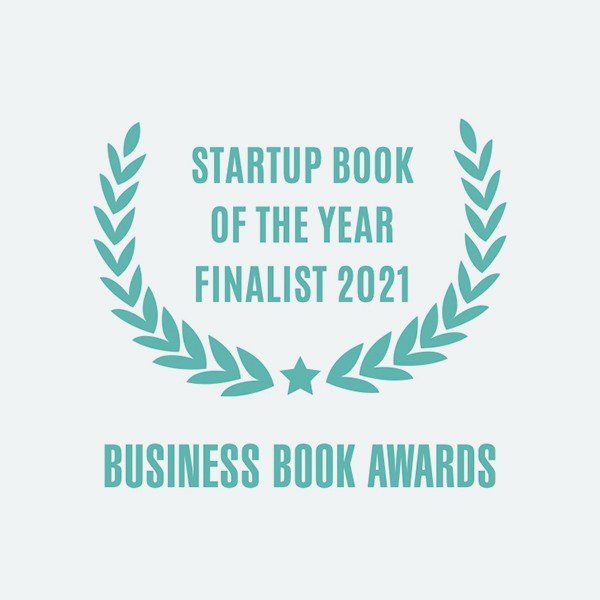

Why harnessing FOMO is the key to investment success
23rd September 2021
It’s human nature to have a fear of missing out – and investors deal with FOMO just like the rest of us. Check out how you can harness potential investors’ FOMO to pave your path to investment success.
With the fear of missing out, investors suffer more because they’re acutely aware of how disastrous letting a potentially lucrative investment slip past them could be. If you know how to plug into an investor’s FOMO and use it to your advantage, then you already have the key to investment success right there in the palm of your hand.
Using FOMO to supercharge your Investment Campaign Strategy
It’s all about generating excitement and expectation around your investor campaign. When an investor sees what a great deal you’re offering, the chances are they’ll want to get in there fast before another investor beats them to it.
However, that doesn’t mean that every investor suffering from FOMO will make a move on your offer straight away. Some will, but others will take a bit more time. A few may even be wary enough to hold fire until they see what other investors are thinking about your proposition. But if other people are interested too, it validates the FOMO they’re feeling.
Validation of FOMO is sometimes all an investor needs to be confident they’re making a good decision.
When that happens, you’ll have a lot more control of the playing field, and you’ll be raising investment a lot faster than founders who don’t have the power of FOMO in their Investable Entrepreneur arsenal.
How to make FOMO happen
If you’ve been following our blueprint for becoming an Investable Entrepreneur, you won’t be surprised by what comes next.
That’s right – a strategy.
You can’t cut corners in the investment raising process, nor can you leave anything to chance. If you genuinely want to secure an investor’s backing, you’ve got to put the hard work in and be as prepared for whatever happens as possible.
It’s the same with harnessing the Fear of Missing Out. You need the correct strategy, and you need to follow it one step at a time.
Preparation is everything
There are two things to do here.
First, make sure that all your critical fundraising assets are in place. That way, you’ll always be ready if an investor approaches you early or when someone who could become a useful contact throws you a curveball question to make sure you know what you’re talking about.
Don’t forget that one of the most critical but often overlooked aspects of raising investment is the interest and confidence you generate around yourself by demonstrating that you’re an expert in your field.
So, start writing blogs and articles loaded with valuable thought leadership content and post them on your blog, your LinkedIn, and any other professional networking channels. If you want to go the extra mile (and that’s always something we’d recommend), you could even do a trawl of the professional journals in your field and submit some articles to them too.
Whatever you can do to underline your expertise is always worth trying. If you publish enough informative and compelling content, investors looking for the next big opportunity will eventually find you. In the meantime, the network you’ve already got will certainly take notice, and you can be sure – if your content is strong enough – they’ll talk to other people about you too.
Keep practising your pitch
Take every opportunity you can to practise your pitch in front of other people as part of your bulletproof fundraising strategy. I don’t mean your parents or the mates you’re hanging out with on Saturday night. I mean your peers, your work colleagues, your network group, and other entrepreneurs. People who will listen to you and give you solid, objective feedback so that you can keep honing your pitch to make it as seamless as possible.
Remember, you never know when an investor may ask you to pitch to them for real.
Please don’t fall into the trap of thinking that because you know your investment proposal upside-down and inside-out, you don’t need to keep practicing anymore. Continuously practising your pitch in a real-world setting will perfect your delivery. When an investor hears you pitch naturally, positively, and with confident energy, their FOMO will be ignited.
When their FOMO’s ignited, they’ll want to hear more.
Know who your target investors are
Investable Entrepreneurs never take a scattershot approach. They do their research; they target the investors they want to work with who are most likely going to be interested in their proposal, and they pursue them with a laser focus.
Just because you want to generate FOMO doesn’t mean you should consider every investor whose FOMO you’ve activated.
Make a list of the top thirty investors you’re interested in and who may be interested in you.
Once you’ve made that list, brainstorm ways you could approach them. Personal introductions or recommendations are always the most effective door openers, so find out if there’s anyone in your regular network who could make that happen or might know someone who will.
Also, don’t forget that potential investors could be anywhere, including your network. Angel investors are especially prone to flying under the radar – they may not identify their job role as “Angel Investor” on LinkedIn as they are often business founders or CEOs themselves.
How do you flush out investors that are unexpectedly close to home?
You can draw out investors in your network by letting your network know you’ll be launching your investment round soon, and you’d appreciate their feedback on your pitch.
This will achieve 2 things:
- Your network of peers will validate your idea and raise your confidence another notch.
- A ‘secret investor’ in your network will show early interest (triggered by the FOMO generated from the real-time validation happening on your post) and ask to meet with you when your round opens.
Of course, there is a third possibility – that people in your network will read your Pitch Deck and then try to offer advice or shoot it down completely. Ignore them. That’s not the point of this exercise. Plus, it’s good practice to strengthen the courage of your convictions and learn how to let criticism bounce off you.
When your round opens, book meetings with investors as soon as you can
If you only take one message away from reading this article, please make it this one.
Fear of Missing Out has a wildfire effect. When you meet with investors in quick succession, and they talk amongst each other about your company and the genius of your investment proposal. This leads it to generate momentum. They’ll have first-hand evidence and peer validation that what you’re offering is something special and could potentially disappear very fast if they don’t move quickly.
Booking all your meetings within the first couple of weeks will be very good for your pitch and your confidence, too. You could also ask the investors you’ve met if they know any investors who might want to get involved. When an investor introduces a founder to another investor, that’s an unmistakable sign your investment campaign strategy is working.
One last thing – never exit your pitch without asking the investor if they’re interested in taking the conversation further. Clarify that you’re not looking for a commitment to invest, just a sign that they’ll want to meet with you again.
One of the most assured ways to get that commitment and be as confident as possible that it will hold up is by asking the investor to fill out an Expression of Interest form. When the investors expressed their interest in writing, they’re far less likely to renege.
Keep the excitement level high
When an investor responds keenly to your pitch, book a second meeting with them as quickly as you can. Don’t waste your time by pursuing an investor who genuinely doesn’t seem interested.
Also, book your second meetings as close together as possible. That won’t only keep the momentum going; it will also give you the chance to let the investor know other investors are also continuing to talk with you.
It’s a fantastic way to stoke up that FOMO and might even encourage the investor to sign up here and now. However, don’t forget the caveat I mentioned earlier: some investors will take more time to commit than others, so don’t be disheartened if that happens. Also, don’t push a slower investor too hard, too fast. If you sense they’re genuinely interested, it’s worth being patient. If you try to force the issue, it could blow up in your face.
Be smart about closing
With luck – not that you’ll need luck if you’ve been following our Investable Entrepreneur blueprint – you’ll close the round with all the investors you want onboard.
But that’s a ‘perfect world’ scenario.
No matter how savvy your campaign has been so far, you’ll probably still have a few on-the-fence investors straggling along behind.
When that happens, let the stragglers know that you’ve got one, or some, of your top-pick investors secured but that you enjoyed your meetings with them, and you’d like to continue talking if they can tell you where they are in the process. Remind them about the Expression of Interest form they hopefully completed and let them know that other investors have expressed their interest, too, so you’ll be contacting all of them within the next few days to find out if they want to join the round.
If the investor has FOMO but needs an extra fire lit under them, this will probably do it. They’ll be reminded about how investable you are and realise they need to respond fast if they don’t want their Fear of Missing Out to become a ‘Bad Luck, You Missed Out’ reality.
But none of the above is worth following if you’re not already an Investable Entrepreneur.
That’s because FOMO doesn’t happen to entrepreneurs who are mediocre.
To find out everything you need to become an Investable Entrepreneur, you can pick up a free copy of Robot Mascot COO James Church’s book here.
Learn how to convince investors
Investable Entrepreneur takes you through our winning methodology – the process we use to increase our client’s chances of raising investment by more than 30x.
“This book will help you translate your entrepreneurial vision into something investors can get behind.”
Daniel Priestley, CEO and founder, Dent Global and four times best-selling business author

Keep up to date with what we’re up to via email






Copyright ©Robot Mascot Ltd. All rights reserved.





